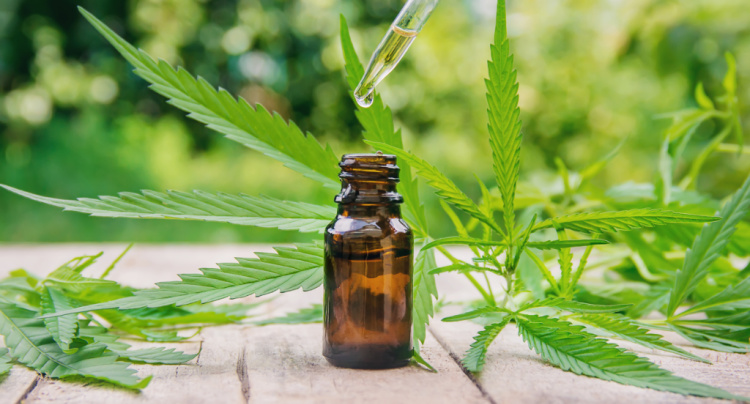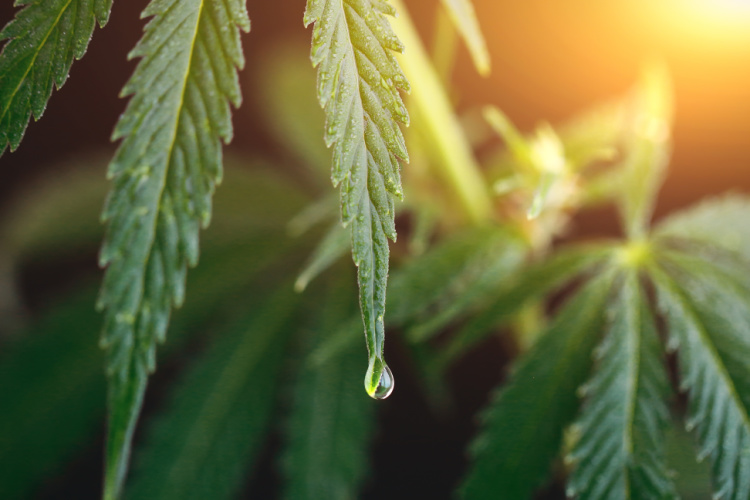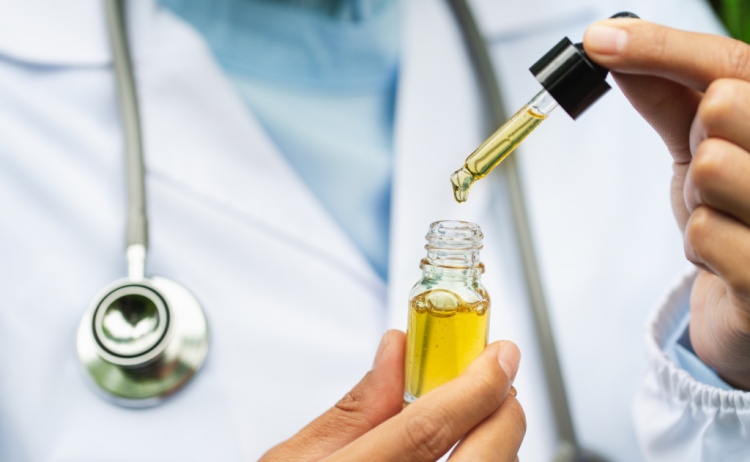Out of all the products we offer at our family of Maryland and Minnesota cannabis dispensaries, tinctures and oils occupy a special place. Both products offer ease of use and consistency, making them excellent options for accessing cannabis’s beneficial cannabinoids, such as THC and CBD. However, over the years, we’ve noticed that many of our customers and patients who are new to these products are left confused by their similarities and what exactly makes them different.
We’re here to set the record straight on these two similar—but also very different!—cannabis liquids. Read on to discover the many nuances that separate CBD tinctures and oils and get answers to all your burning questions, including:
- What’s the difference between CBD tincture and oil?
- What’s the flavor profile of oils and tinctures?
- How do you use tincture and CBD oil?
- When will a CBD tincture take effect?
And much more! By the time you’re finished reading, you’ll be a true aficionado of these two popular forms of CBD.
Cannabis Tincture vs Oil: What’s the Difference?
Both cannabis tinctures and cannabis oils are a safe and convenient way of consuming cannabis. They’re often preferred by medical patients for their ease of use and fast-acting therapeutic effects.

In many cases, the terms “tincture” and “oil” are used interchangeably. But while these two kinds of products may look the same and are often grouped together, there are some important differences between them. In fact, oils and tinctures typically contain varying ingredients and are produced using different methods. Let’s break them down one by one.
Cannabis Oils
Oils are simply cannabinoids, such as CBD or THC, suspended in an oil-based liquid carrier. They are usually produced using solvents such as CO2 and ethanol and can be made with bases of olive oil, hemp seed oil, MCT, grapeseed oil, and even avocado oil.
Some cannabis oils are made from isolated cannabinoids and contain nothing more than THC, CBD, or a mix of the two. Others can contain a blend of plant compounds, including other cannabinoids, aromatic terpenes, and the tertiary compounds known as flavonoids. Depending on what types of plant compounds they contain, oils will often be labeled as “broad-spectrum” or “full-spectrum.”
Cannabis Tinctures
Tinctures are typically produced using a simple, alcohol-based method and can have a base of alcohol or glycerine. They can be clear or amber-colored, odorless, and have a mildly sweet taste and syrup-like consistency.
They are made by steeping plant material in a liquid medium, such as neutral alcohol or glycerine, before straining it, leaving behind a cannabis-infused liquid. This process can take days or weeks to allow the compounds to extract into the liquid base properly, though the mixture is sometimes heated on low heat for a couple of hours to speed up the process.
Though the traditional liquid medium used for making cannabis tinctures is alcohol, today, alternate mediums such as MCT or glycerin are sometimes used
CBD Tincture vs Oil
While both tinctures and oils can contain either THC, CBD, or a combination of the two, it’s no surprise that CBD options have been gaining popularity. Why? For one, CBD products containing 0.03% THC or less are legal at the federal level, thanks to the 2018 Farm Bill. Medical and adult-use cannabis is legal across much of, though not all of, the country, making hemp-based oils more widely accessible than their cannabis-derived counterparts.

This means that when you purchase a CBD tincture outside a dispensary, it’s actually a hemp tincture. That’s because while hemp is often rich in CBD, it actually contains very little THC, the cannabinoid most responsible for the “high” in cannabis. As a result—and thanks again to the 2018 Farm Bill—hemp-derived CBD products can be found nearly everywhere in the United States.
When you’re at your local dispensary and faced with CBD oils or CBD tinctures, it’s best to know what you would want out of each product before diving in. Since some consumers may want to avoid alcohol, oil could be the better option. On the flip side, alcohol-based tinctures are generally thought to have a longer shelf life. Whichever you try first, start low and go slow to better assess each product’s exact effects on your body and mind.
Flavor Profile of Oils and Tinctures
Depending on your particular tastes, one possible downside of using cannabis or hemp oils is that it retains much of the plant’s earthy and grassy flavor—which some people find bitter or skunky. What’s the reason for the bitterness? It’s typically due to the oil containing the complete range of aromatic and flavorful terpenes, flavonoids, and other compounds present in the plants themselves.
Other oils are made using THC or CBD distillate, a highly refined product containing essentially pure cannabinoids with no flavor or aroma whatsoever. These products are sometimes formulated with added terpenes or other flavors.
When it comes to alcohol-based tinctures, in addition to the plant’s natural flavor profile you will also have the distinct flavor and experience of the alcohol used to extract the cannabinoids and terpenes. Some people prefer to avoid alcohol, while still others prefer the less intense experience of an oil. Generally speaking, oils are much more popular and commonly available today than alcohol-based tinctures, though cannabis tinctures played an important role in the history of medicinal cannabis!
Benefits of Tincture and Oils: Which One Is Right For You?
On a functional level, when it comes to tincture vs oil, both will deliver much the same benefits. Both of these concentrated liquids are simple to use, easy to transport, and take effect reasonably quickly. For these reasons, tinctures and oils have been a mainstay for the medical patients we serve at our dispensaries. Learn more about becoming a medical patient in Minnesota and Maryland.
Perhaps the more impactful question is: Should you use a CBD oil or one containing THC as well? While the two compounds can be thought of as cousins, they’re quite different and address very different symptoms. Though researchers have found that THC and CBD can work best when taken together, if the psychoactivity of THC is something you’d rather avoid, it’s best to stick with pure CBD (or very low THC) products instead.
How To Use Tinctures and Oils
Ready to try using a cannabis tincture or CBD oil? Let’s run down a few different ways you can use these products.
The most common way of using a tincture or oil is by applying it sublingually, or “under the tongue.” Simply load up the dropper and place the liquid under the tongue for fast absorption—typically within 15 to 45 minutes.

Keep the liquid there for a minute—or longer if it’s comfortable for you—before swishing it around your mouth and swallowing it. Holding and swishing will allow some of the content of the oil or tincture to be absorbed directly by membranes under the tongue and on the insides of the cheeks. Upon swallowing, the rest of the cannabinoids will be processed through the stomach—an activation process akin to an edible.
Alternatively, these liquids can simply be mixed into your favorite foods and liquids, or just swallowed whole. That said, research has indicated that we access lower bioavailability when cannabis is processed through the stomach versus sublingually.
How Long Until a Tincture or Oil Takes Effect?
Now that you’re ready to take a dose, remember that how you choose to ingest your THC or CBD oil tincture will affect how you experience its effects. When applied sublingually, you can usually start to feel the effects of your THC or CBD tincture or oil within 15 – 45 minutes. The effects usually last from a couple to a few hours.
By comparison, when cannabis liquids are swallowed, the effects of the THC or CBD tincture or oil can take anywhere from 30 minutes to a couple of hours to kick in. That said, they can also last for several hours longer than those taken sublingually.
Explore Cannabis and All Its Consumption Methods
Potent, fast-acting, and convenient, cannabis oils and tinctures are among the most popular products at our Maryland and Minnesota dispensaries. If you’re looking for a consistent, shelf-stable, and easy-to-dose way to access the benefits of THC and CBD, these infused liquids are well worth checking out.
Shopping online with Green Goods is convenient and simple. And if you’re interested in exploring all the benefits of being a medical patient in Minnesota and Maryland, start here.
Want to know more about how to use cannabis products to boost your wellness and self-care regimens? Spend some time checking out our cannabis blog, where you’ll find articles about the aromatic world of terpenes, the science of the endocannabinoid system, and other useful (and fascinating!) stories about how cannabis partners with the body to produce such profound effects.
Have any other questions about cannabis tincture vs oil—or any other cannabis-related topics? Just ask one of our friendly budtenders or drop us a line. We’re always here to help!
